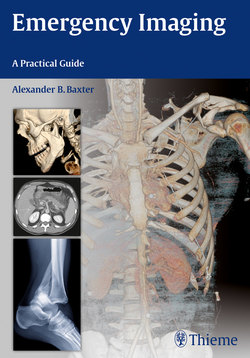Читать книгу Emergency Imaging - Alexander B. Baxter - Страница 77
Оглавление63
2Brain
deficiency virus (HIV) encephalitis, pro-gressive multifocal leukoencephalopathy (PML), and posterior reversible encepha-lopathy syndrome (PRES), among others. The clinical presentation may vary but of-ten includes neurologic deficits, paresthe-sias, and weakness.
While CT will often show low-attenua-tion white matter changes similar to those seen in small-vessel ischemicdisease, MRI is more sensitive for detecting lesions that can be subtle or even invisibleon CT. MS le-sions are generally hyperintense on T2 and FLAIR sequences and hypointense on T1-weighted images. They are typically small and irregular but may coalesce into larger lesions that can mimic brain tumors (tu-mefactive MS). Frequent sites of involve-ment include periventricular white matter, the corpus callosum, the brainstem, and subcortical white matter. Perilesional va-sogenic edema is not characteristic of MS.
HIV encephalitis, or central nervous system (CNS) infection by HIV, typically occurs shortly after primary infection and may present with headache, sti neck, drowsiness, confusion, or seizures. Both CT and MR findings of HIV encephalitis are insensitive, especially early in infection. Hypodensity or generalized volume loss may be present, but more frequently the CT will be normal. MRI may demonstrate an increased signal T2/FLAIR or smaller demyelinative lesions. With the initia-tion of highly active antiretroviral therapy (HAART), prognosis is good, with reversal of neurologic symptoms in many patients (Fig. 2.26).
◆White Matter Disease
Subcortical and periventricular low-atten-uation white matter changes are a com-mon finding in patients who undergo head CT scanning for various indications. White matter changes are most common in pa-tients over 60, and in this group small-vessel ischemic or chronic hypertensive disease is usually responsible. In patients under 50, small-vessel ischemic disease is uncommon, and considerations should in-clude a variety of demyelinating diseases.
Small-vessel ischemic disease is a fre-quent finding on both CT and MRI in older adults and in patients with vascular riskfactors, such as hypertension, diabetes, ath-erosclerosis, and atrial fibrillation. These changes often accumulate over time andcan have a variable presentation due to thebrain’s compensatory mechanisms. Symp-toms, if present, are due to either completeor incomplete infarction of subcorticalstructures, leading to various cognitive,motor, or mood disturbances. The burdenof white matter disease does not directlyequate with severity of symptoms or eventhe presence of any clinically detectableabnormality. When symptomatic, patientscan present with neurologic deficits ranging from mild subjective cognitive complaintsto frank dementia and Parkinsonism.
Demyelinating disease, which may be inflammatory, infective, ischemic, or toxic in etiology, encompasses a number of con-ditions characterized by destruction of or damage to normally myelinated axons. They include multiple sclerosis (MS), acute disseminated encephalomyelitis (ADEM), osmotic demyelination, human immuno-
Fig. 2.26a–fa,b Small vessel ischemic disease. Diuse, severe low attenuation periventricular and subcortical white matter changes. Mild underlying cerebral volume loss.
c,d Multiple sclerosis. (c) Generalized volume loss with periventricular low-attenuation white matter changes on nonenhanced CT. In an older patient, this appearance is indistinguishable from small-vessel ischemic or hypertensive disease. In the patient under 50 years, consider demyelination. (d) Periventricu-lar, radially oriented areas of high signal intensity on FLAIR imaging.
e,f HIV encephalitis. Subcortical low-attenuation changes that are nonspecic and overlap with other causes of generalized demyelination or small-vessel ischemic disease.
